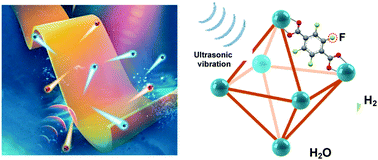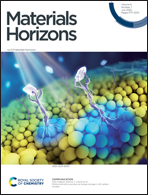Harvesting mechanical energy for hydrogen generation by piezoelectric metal–organic frameworks†
Abstract
Piezocatalysis, the process of directly converting mechanical energy into chemical energy, has emerged as a promising alternative strategy for green H2 production. Nevertheless, conventional inorganic piezoelectric materials suffer from limited structural tailorability and small surface area, which greatly impedes their mechanically driven catalytic efficiency. Herein, we design and fabricate a novel UiO-66(Zr)-F4 metal–organic framework (MOF) nanosheet for piezocatalytic water splitting, with the highest H2 evolution rate reaching 178.5 μmol g−1 within 5 h under ultrasonic vibration excitation (110 W, 40 kHz), far exceeding that of the original UiO-66 host. A reduced bandgap from 2.78 to 2.43 eV is achieved after introducing a fluorinated ligand. Piezoresponse force microscopy measurements demonstrate a much stronger piezoelectric response for UiO-66(Zr)-F4, which may result from the polarity of the introduced fluorinated ligand. This work highlights the potential of MOF-based porous piezoelectric nanomaterials in harvesting mechanical energy to drive chemical reactions such as water splitting.

- This article is part of the themed collection: Horizons Community Board collection: new trends in energy storage and harvesting


 Please wait while we load your content...
Please wait while we load your content...